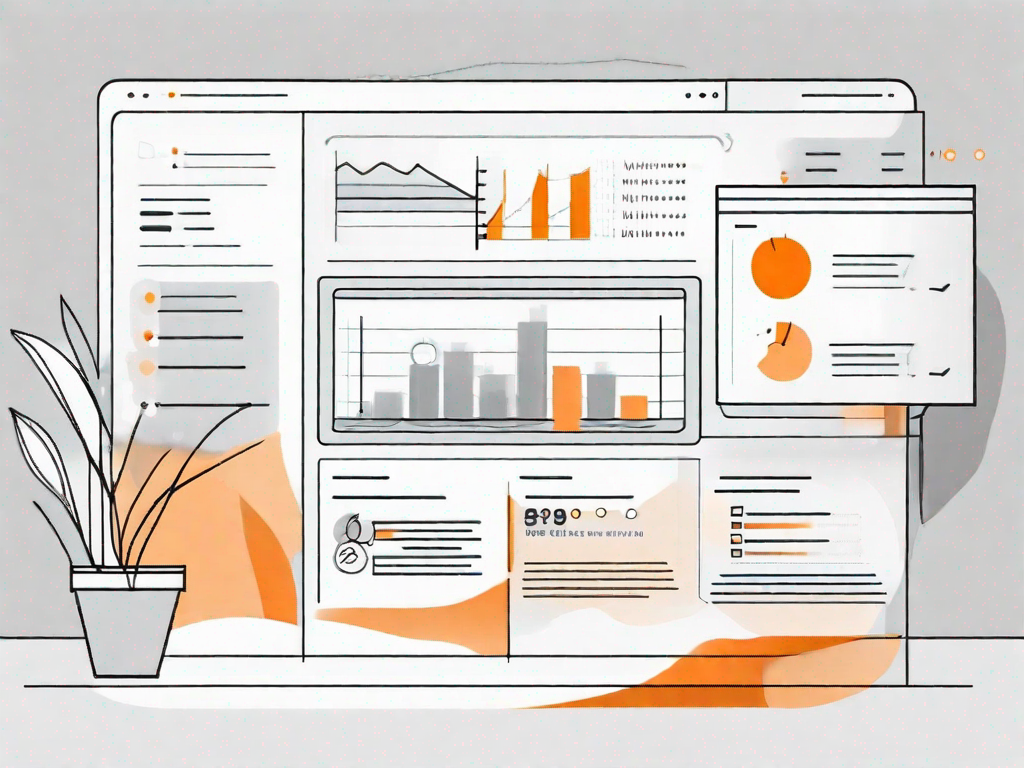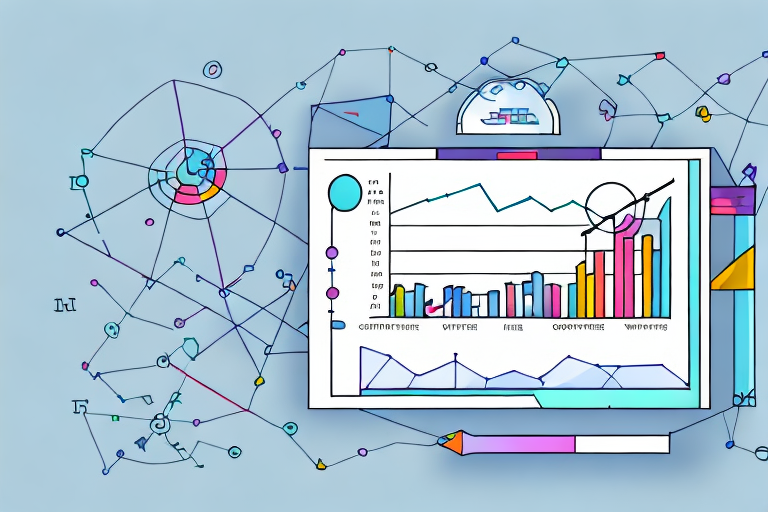.svg)
From Third-Party to First-Party Data: Making the Shift
.svg)

More and more businesses are increasingly recognising the importance of data-driven strategies. And this is for a reason. As privacy concerns and regulatory changes reshape the way data is collected and used, there is a significant shift from third-party to first-party data. This transition not only aligns with emerging privacy standards but also empowers businesses to build more personalised and meaningful relationships with their customers. Understanding how to effectively make this shift is crucial for any organisation aiming to thrive in the modern marketplace.
Understanding the Difference Between Third-Party and First-Party Data
What is Third-Party Data?
Third-party data is information collected by an entity that does not have a direct relationship with the consumer. Typically, this data is aggregated from various sources and sold to businesses looking to enhance their marketing efforts. While it offers a broad reach and can provide insights into consumer behaviour, the reliability and accuracy of third-party data can be questionable. Moreover, with increasing scrutiny on data privacy, reliance on third-party data is becoming more challenging.
Historically, third-party data has been a cornerstone for digital marketers, enabling them to target audiences at scale. However, the landscape is changing as consumers become more aware of how their data is being used. This awareness, coupled with stringent data protection regulations like the GDPR and CCPA, has led to a decline in the availability and effectiveness of third-party data.
What is First-Party Data?
First-party data is information that a company collects directly from its customers. This data is gathered through interactions on websites, apps, social media, and other owned channels. Because it is collected directly from the source, first-party data is considered highly reliable and relevant. It includes information such as purchase history, preferences, and behavioural data, which can be used to create personalised marketing strategies.
Unlike third-party data, first-party data is collected with the explicit consent of the consumer, making it compliant with privacy regulations. This transparency builds trust between the business and its customers, fostering long-term relationships. As a result, businesses are increasingly focusing on enhancing their first-party data collection capabilities to gain a competitive edge.
The Benefits of Shifting to First-Party Data
Enhanced Customer Insights
First-party data provides businesses with a wealth of insights into their customers' behaviours and preferences. By analysing this data, companies can gain a deeper understanding of what drives their customers' decisions, allowing them to tailor their offerings more effectively. This level of personalisation not only improves customer satisfaction but also increases the likelihood of repeat business.
With first-party data, businesses can segment their audiences more accurately, ensuring that marketing messages are relevant and timely. This targeted approach reduces wasted ad spend and improves the overall efficiency of marketing campaigns. As a result, companies can achieve better ROI and maximise their marketing efforts.
Improved Data Privacy and Compliance
In an era where data privacy is paramount, first-party data offers a compliant solution for businesses. By collecting data directly from consumers with their consent, companies can ensure they are adhering to data protection regulations. This compliance not only mitigates the risk of legal repercussions but also enhances the company's reputation as a trustworthy entity.
Moreover, as third-party cookies are phased out, businesses that rely on first-party data are better positioned to adapt to these changes. By building a robust first-party data strategy, companies can future-proof their operations and maintain their competitive edge in the digital marketplace.
Strengthened Customer Relationships
First-party data allows businesses to engage with their customers on a more personal level. By understanding individual preferences and behaviours, companies can create tailored experiences that resonate with their audience. This personalisation fosters a sense of loyalty and strengthens the bond between the brand and its customers.
Furthermore, by prioritising transparency and data privacy, businesses can build trust with their customers. This trust is invaluable, as it encourages customers to share more information, further enhancing the company's data collection efforts. In turn, this creates a virtuous cycle of data-driven insights and personalised experiences.
Strategies for Transitioning to First-Party Data
Building a Robust Data Collection Infrastructure
To effectively transition to first-party data, businesses must invest in the right tools and technologies. This includes implementing data management platforms (DMPs) and customer data platforms (CDPs) that can efficiently collect, store, and analyse data. These platforms enable businesses to centralise their data collection efforts and gain a holistic view of their customers.
Additionally, businesses should focus on optimising their digital touchpoints to encourage data collection. This can be achieved by enhancing website and app experiences, implementing interactive features, and incentivising customers to share their information. By creating a seamless and engaging user experience, businesses can maximise their first-party data collection efforts.
Leveraging Customer Engagement Channels
Businesses should leverage various customer engagement channels to collect first-party data. This includes email marketing, social media interactions, and loyalty programmes. By engaging with customers across multiple touchpoints, companies can gather comprehensive data that provides valuable insights into customer preferences and behaviours.
Furthermore, businesses should focus on creating meaningful interactions that encourage customers to share their information willingly. This can be achieved by offering personalised content, exclusive offers, and tailored recommendations. By providing value to customers, businesses can enhance their data collection efforts while building stronger relationships with their audience.
Ensuring Data Quality and Accuracy
As businesses transition to first-party data, it is crucial to prioritise data quality and accuracy. This involves implementing data validation processes and regularly auditing data to ensure its reliability. By maintaining high data quality standards, businesses can make informed decisions and create effective marketing strategies.
Moreover, businesses should invest in data analytics tools that can provide actionable insights from their first-party data. These tools enable companies to identify trends, uncover opportunities, and optimise their marketing efforts. By leveraging data analytics, businesses can maximise the value of their first-party data and drive business growth.
Overcoming Challenges in the Transition
Addressing Data Privacy Concerns
One of the primary challenges in transitioning to first-party data is addressing data privacy concerns. Businesses must ensure that they are transparent about their data collection practices and obtain explicit consent from customers. This involves clearly communicating how data will be used and providing customers with control over their information.
Additionally, businesses should implement robust data security measures to protect customer information. This includes encrypting data, implementing access controls, and regularly monitoring for potential security threats. By prioritising data privacy and security, businesses can build trust with their customers and mitigate the risk of data breaches.
Integrating Data Across Systems
Another challenge in the transition to first-party data is integrating data across various systems and platforms. Businesses often have data stored in disparate systems, making it difficult to gain a unified view of the customer. To overcome this challenge, companies must invest in data integration solutions that can seamlessly connect different data sources.
By integrating data across systems, businesses can create a comprehensive customer profile that provides valuable insights into customer behaviour and preferences. This holistic view enables companies to deliver personalised experiences and optimise their marketing efforts. Additionally, data integration facilitates better collaboration between teams, ensuring that everyone has access to accurate and up-to-date information.
Adapting to Changing Consumer Expectations
As consumer expectations continue to evolve, businesses must adapt their strategies to meet these changing demands. Customers today expect personalised experiences that are relevant and timely. To meet these expectations, businesses must instrumentalize their first-party data to create tailored marketing campaigns that resonate with their audience.
Moreover, businesses should continuously monitor consumer trends and preferences to stay ahead of the competition. This involves regularly analysing first-party data and adjusting marketing strategies accordingly. By staying attuned to consumer expectations, businesses can maintain their competitive edge and drive customer loyalty.
Conclusion
The shift from third-party to first-party data is a critical transition for businesses navigating the modern digital landscape. By prioritising first-party data collection, companies can improve customer insights, improve data privacy compliance, and strengthen customer relationships. While the transition presents challenges, businesses that invest in the right strategies and technologies can successfully navigate this shift and thrive in the competitive marketplace.
As data privacy regulations continue to evolve, the importance of first-party data will only grow. By embracing this shift and prioritising transparency and trust, businesses can build a sustainable data strategy that drives long-term success. Ultimately, the transition to first-party data is not just a compliance requirement but an opportunity to create more meaningful and personalised customer experiences.
Let's
Let’s discuss how we can bring reinvigorated value and purpose to your brand.







.svg)